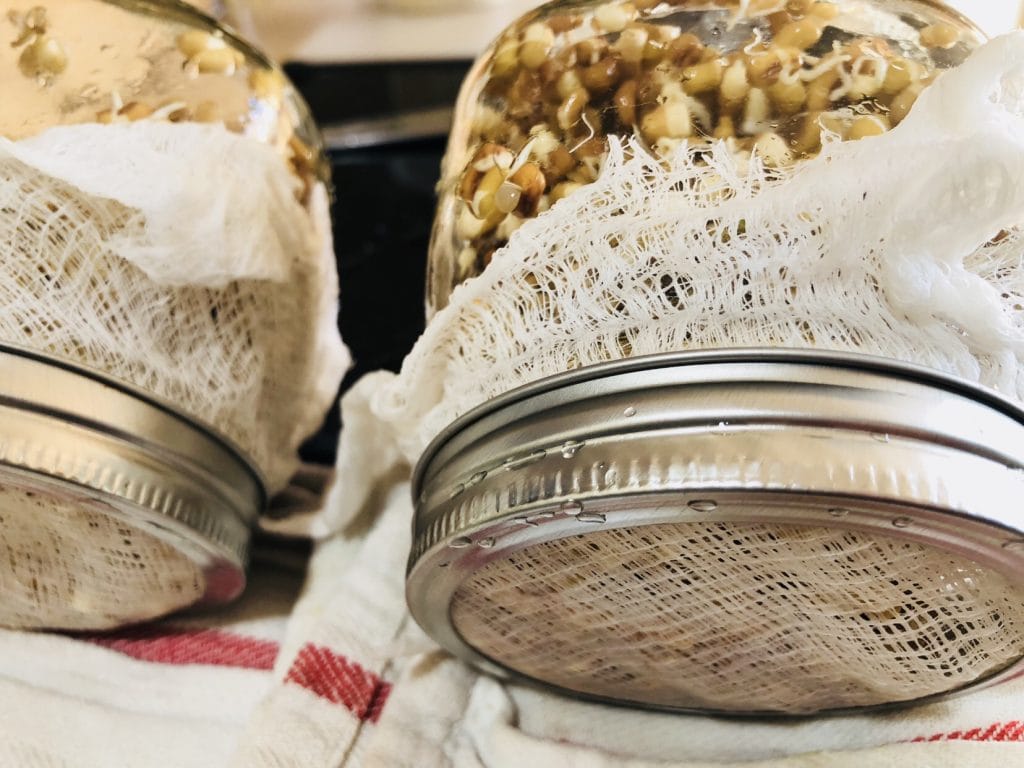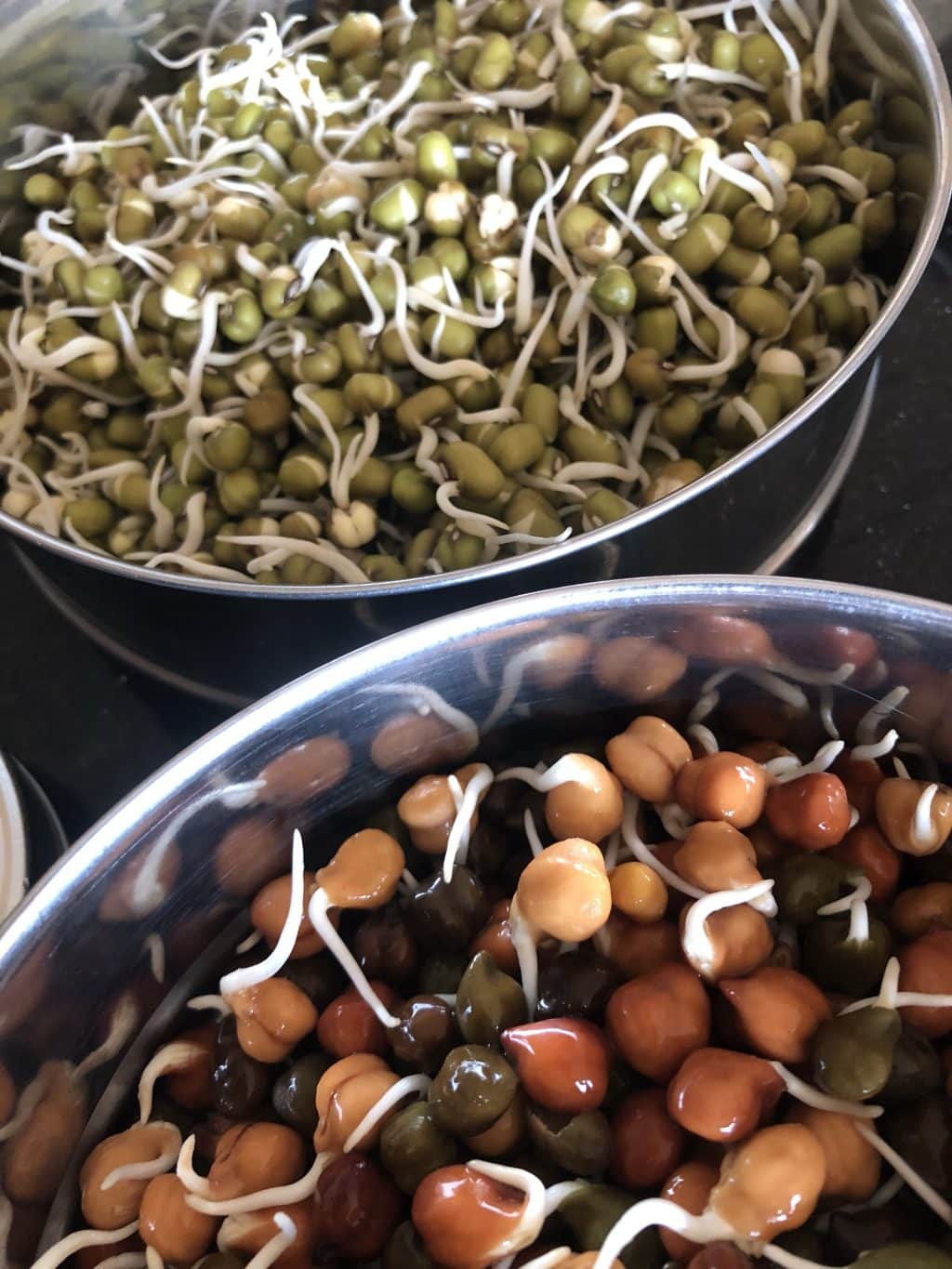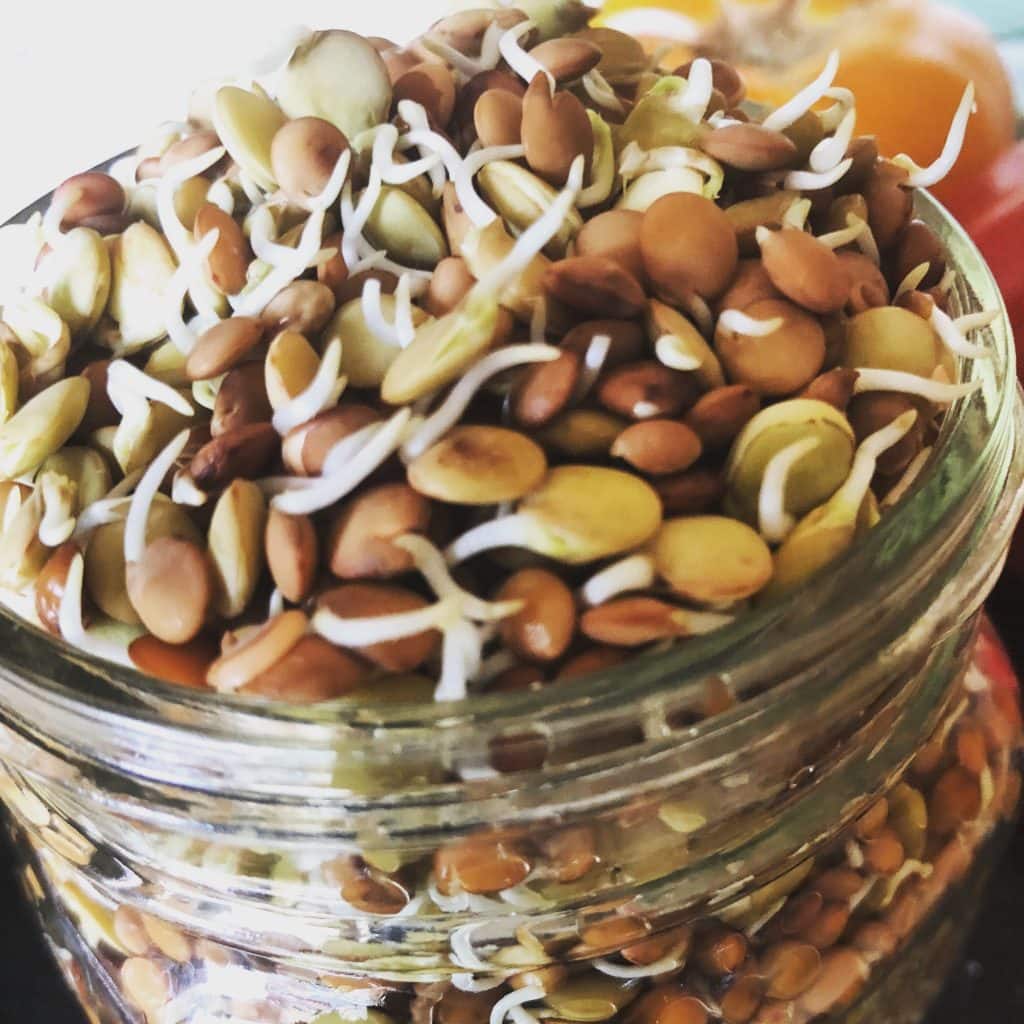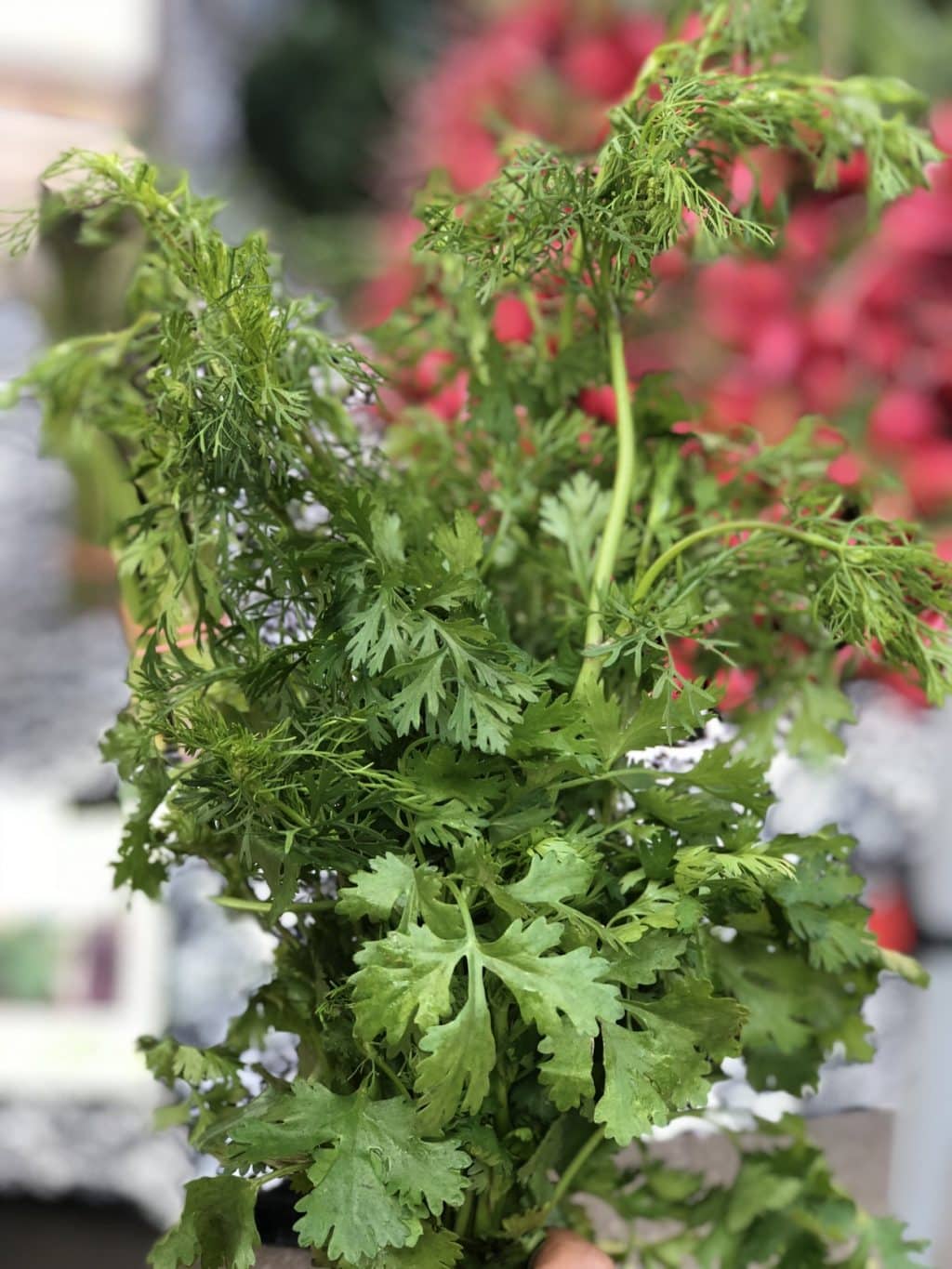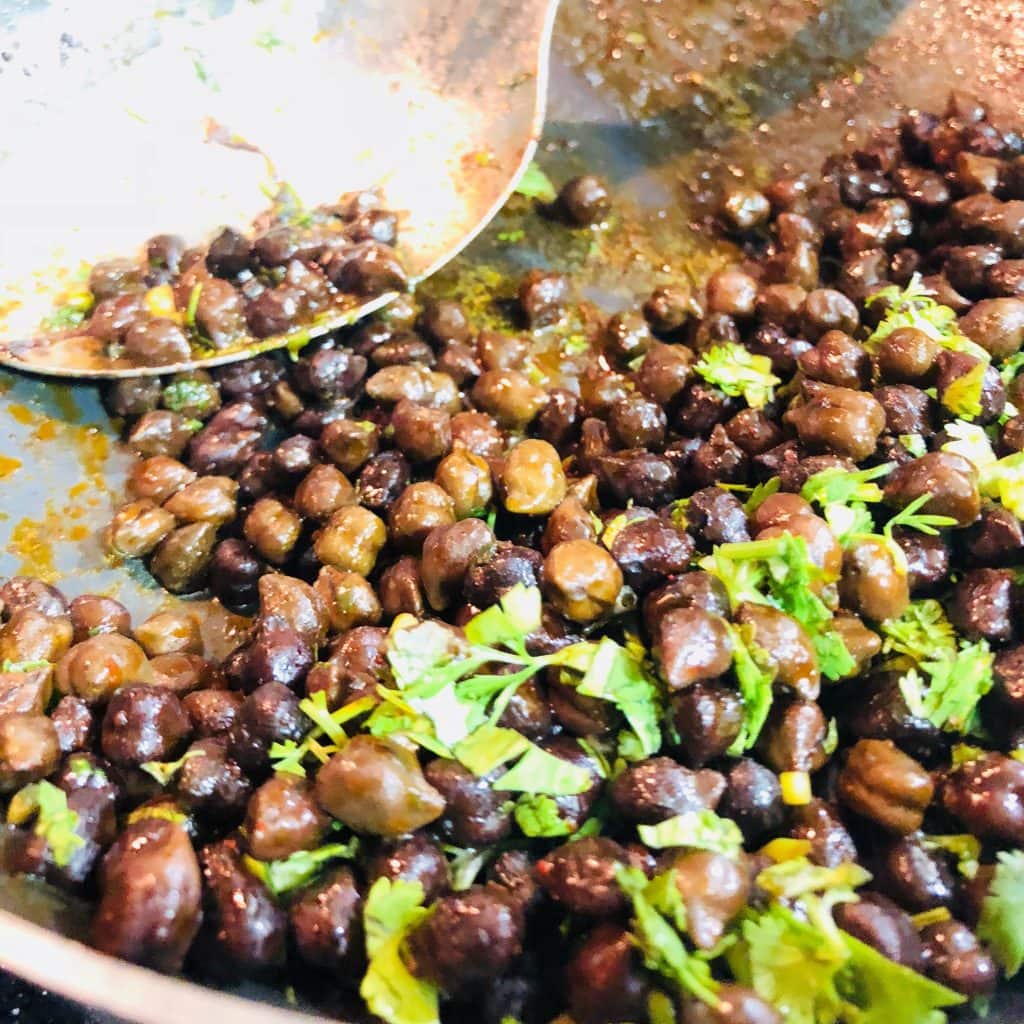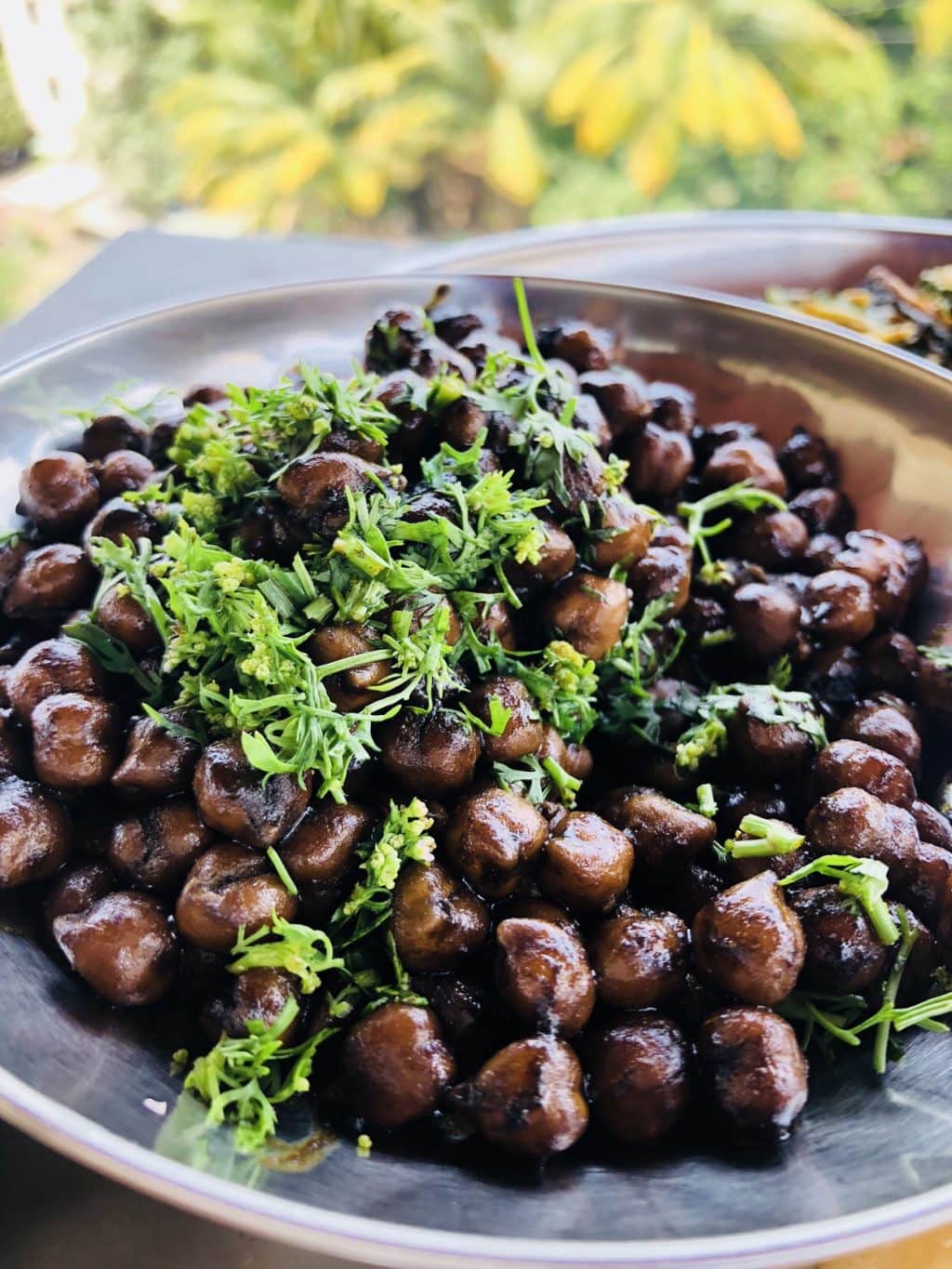On Sprouting
One important aspect of Maharashtrian and or Indian cuisine is cooking with sprouted beans and lentils of various kind.
We generally cook with sprouts atleast once or twice a week.
Our sprouting routine is the same. Set some beans or lentils to sprout in mason jars.
Soak
Some lentils or beans need to be soaked more than the other. Soaking atleast two hours at minimum is a general rule one can follow. We sometimes soak overnight. Always use enough water to soak, four times the lentils or bean is good.
Mason Jar and Cheesecloths
Once beans or lentils are soaked we cover with a cut piece of cheesecloth and add the mason jar ring. Then drain the water and rinse the beans or lentils, then drain water again. Then we set them at the edge of a board with a kitchen towel underneath. Kitchen towel helps the jars not slip. You can also use an empty egg carton to keep them tilted.
Wash and drain frequently
After this once or twice a day as we pass the sprouting jars in kitchen we wash the lentils or beans and rinse them then let them sprout.
Temperature and light
Sprouting is aided by warm areas. If your kitchen is too cold you might not get sprouting. Also if area is too bright the sprouting may not succeed. In this case you can drop a towel over the jars.
Once sprouted remove them and use immediately or store in the refrigerator and use as soon as you can. We throw the cheesecloth piece away and wash and resue the kitchen towel.
You can sprout moong, matki (moth / turkish gram), masoor, garbanzo and a host of other sprouting beans or lentils.
One of our favorite to sprout are chickpeas which are smaller than the regular variety and brown colored. Sometimes they are also available in green color. Both are much smaller in size and with wrinkly skin and taste more nuttier versus the creamier more common chickpea. They can be found in indian geocery stores in the US or at Kalustayans.
These used to be standard fare at a religious function my grandma would host where ladies from the neighborhood would be invited and would be offered a small bounty of these sprouted brown/kala (black) harbhara (chickpeas) as a takeaway. Conversely when my mom or grandma would visit this haldi-kunku function they would comeback with sprouted chickpeas and invariably mom would make “Usal” of these chicpeas. Usal is a dish with runny broth or sticky pan sauce made with beans or lentils that are fresh or dried and or sprouted.
Kala Harbara Usal
It is very important to cook the sprouted chickpeas and mom would steam them in a pressure cooker with just a little water added. Its important that they are well sprouted for them to cook well. Once you remove them from pressure cooker, it is equally important to mash them a little bit with back of the spoon and cook and consume soon. If they are left to cool down they will firm up.
Mom always used an iron kadhai/pan for cooking them. Her way of cooking them was quite simple. She did not use anything more than one of cumin or mustard and little bit of chili powder. It is surprising how flavorful the cooking water and slightly toasted chilli powder tastes alongwith the kala harbhara.
Key is to start the iron kadhai or a regular pan on medium heat with some oil. Once it is hot enough, add some cumin or mustard seeds til they crack.
A common mistake is to burn the chilli powder after adding to the oil. So lower the heat or move the pan aside and if really hot wait a bit for the oil to cool down a bit. At this point add the chili powder and let it toast slowly without burning in the warm but not hoil creating a flavorful slightly smoky oil but make sure to not burn. If needed increasethe heat slightly or take the pan back on heat. If the oil foams too quickly and there is danger of chili powder burning just add a few spoons of water.
Then strain and add the chickpeas that were cooked in the pressure cooker but retain their cooking water. Sautee the chickpeas on the oil and add some of the cooking water and increase the heat to medium. Cover and cook for 10 minutes till the water bubbles and steams the chickpeas. Then uncover, season with some salt and increase the heat and let the water evaporate. This creates a sticky pan sauce. Let it dry up more and you will see a little bit of sauce start to stick to the pan. Move the chickpeas around and as the sauce dries and sticks to the pan splash with some cooking water or plain water and deglaze and scrape and mix around to get a pan sauce of consistency that just coats the chickpeas.
Turn off the heat and add some chopped cilantro and mix it in. Then add some more on the top. Note that cilantro available in india is often the thin and small bolting leaves which are super fragrant and flavorful. You will find these if you grow the cilantro yourself or buy it at a farm or farmers market in US. The cilantro sold in stores in US is larger leaved portions generally growing at the lower areas of plant.
It is surprisingly flavorful with such minimum ingredients and i can eat them by the playful of the kala harbara are fully cooked and warm and not too spicy. If you prefer something more bolder in flavors adding turmeric, heeng in the oil while tempering and finishing the seasoning with chopped garlic or ginger and some black salt are always options available.


